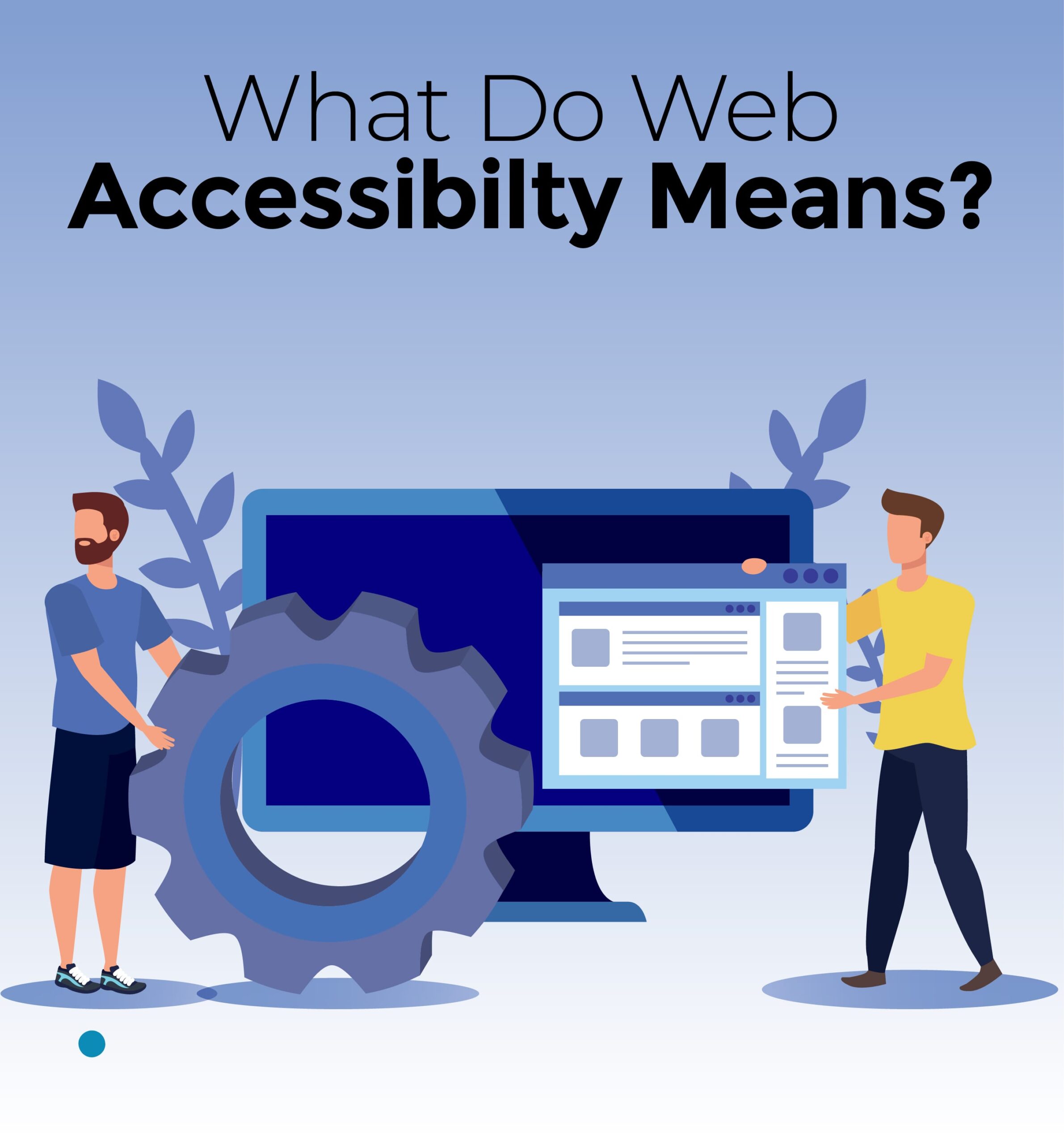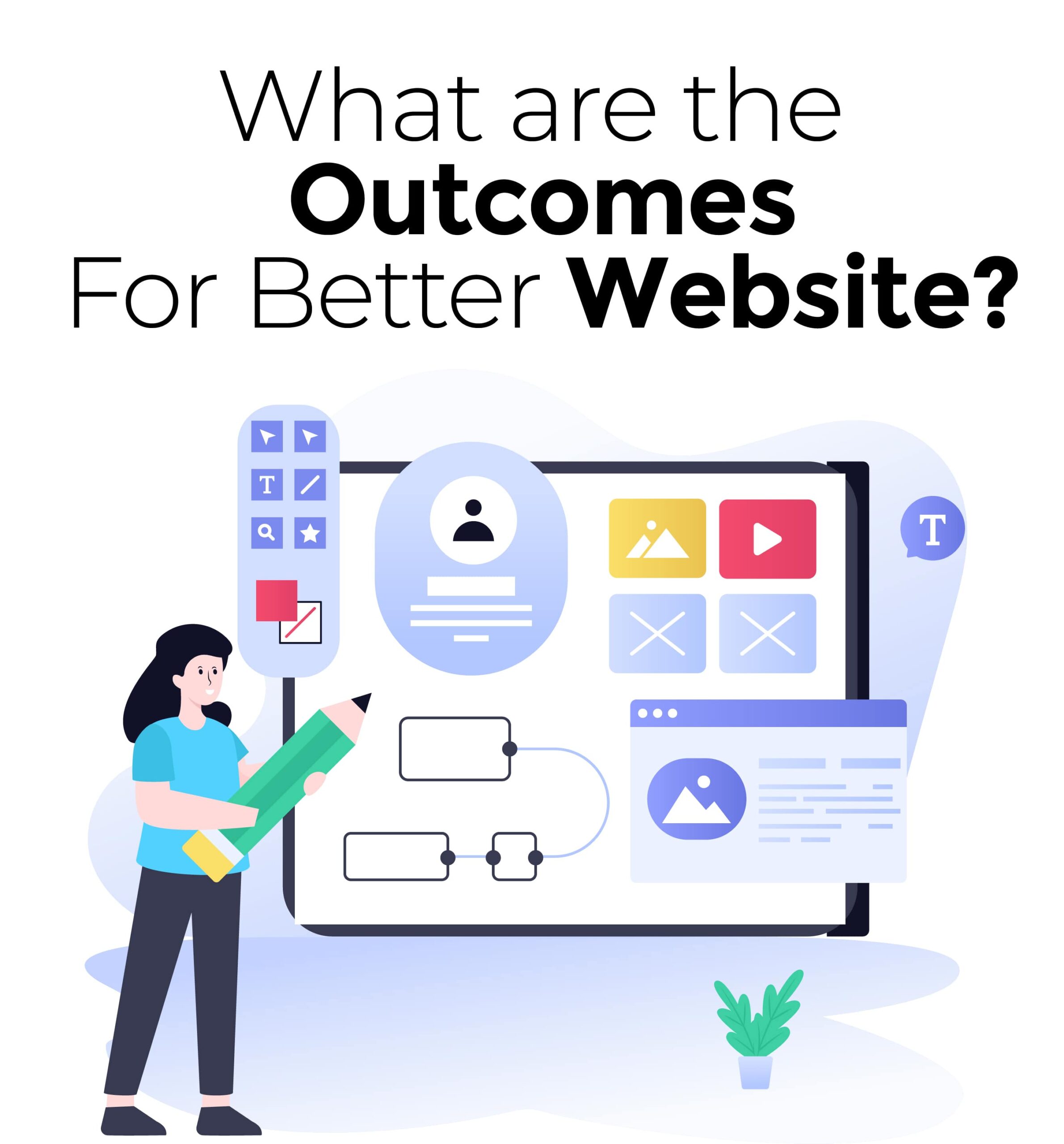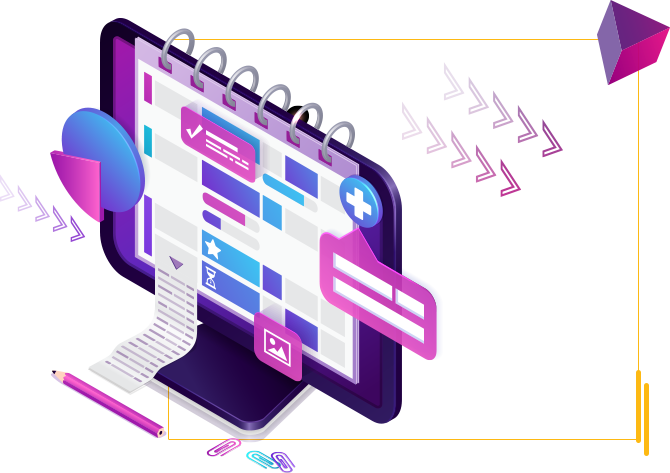
How to Improve Navigation and Layout for Better Web Accessibility
Are you tired of websites that are difficult to navigate and cluttered with confusing layouts? Do you want to make your website more accessible for all users, including those with disabilities? If so, then this blog post is for you! In today’s digital age, it’s vital to ensure that your website is visually appealing, easy to use, and accessible to everyone. That’s why we’ve compiled a list of tips and tricks on improving navigation and layout for better web accessibility. So, let’s dive in and make your website more user-friendly!


What is Web Accessibility?
Web accessibility is designing and building websites, web apps, and digital material so that all individuals have equal access and usefulness regardless of skills or impairments. Its goal is to remove barriers and provide an inclusive online experience for persons with disabilities, such as visual, auditory, physical, cognitive, and neurological impairments.
Implementing design ideas, coding methodologies, and technical standards that allow persons with disabilities to see, comprehend, navigate, engage with, and contribute to the web is what web accessibility entails.
Who Are We?
We cater to all your business needs from digital
marketing to website development!

Benefits of Improving Navigation and Layout for Web Accessibility
Improving online accessibility navigation and layout benefits individuals with disabilities and the wider user community. Here are some significant benefits:
Enhanced User Experience:
Well-structured navigation and layout make everything more intuitive and user-friendly for everyone. Clear and consistent navigation makes it easier for users to find and get the desired material, decreasing frustration and increasing overall happiness.

Improved Accessibility:
To access and interact with digital information, people with disabilities, such as vision impairments or motor limitations, rely significantly on efficient navigation and well-organized layouts. Websites become more accessible by optimizing navigation and design, ensuring that people with disabilities can browse around pages, understand the content, and complete tasks successfully.
Increased audience and reach:
A website with better navigation and style is more inclusive, catering to a broader range of users, including those with impairments. Websites can reach a wider audience by considering accessibility during design and development, broadening their user base, and potentially gaining new clients or users.
Legal and regulatory requirements must be met.
Many countries and areas have rules and regulations requiring websites to be accessible to people with impairments. Website owners can ensure compliance and prevent potential legal concerns or penalties by updating navigation and layout to fulfill accessibility criteria (such as the Web Content Accessibility Criteria – WCAG).
Grow Human-Centered
Businesses
Online
Web App Vault is a custom web design and business
website development company that enhances the visibility
and credibility of businesses. We are an approachable
eCommerce service provider that fuels digital marketing.
We Are Here To Help
SEO (Search Engine Optimization):
Better search engine visibility and rankings are aided by well-structured navigation and layout. Clear navigation, clear headings, and well-organized content boost website indexing, making it easier for search engines to crawl and understand the structure and content of the site.
Future-Proofing:
Using accessible navigation and layout techniques guarantees that websites are ready for future technological improvements and changing user needs. It lays the groundwork for incorporating new features and future technologies, and increasing accessibility standards, assuring long-term usability and relevance.
Web App Vault – Your
Industry-Specific
Data Guardian
Our industry-specific web application solution
provides robust data security and a seamless user
experience tailored to your industry’s requirements.
Safeguard your sensitive data with assurance.

Providing Animation Services To
Clients In Multiple Cities Across USA & Canada
- Arlington
- Cleveland
- Jacksonville
- Miami
- Orlando
- Atlanta
- Dallas
- Louisville
- Minneapolis
- Philadelphia
- Austin
- Denver
- Kansas City
- New York
- Portland
- Chicago
- Houston
- Los Angeles
- New Orleans
- San Diego
Improving Web Accessibility: Tips for Web Developers
You can significantly enhance the accessibility of your website, ensuring that all users, including those with disabilities, can navigate, understand, and interact with your content effectively by implementing these tips.
Clear and Consistent Navigation:
Clear and consistent navigation is a crucial part of increasing web accessibility. For navigation links and buttons, descriptive and valuable labels are required. This allows consumers to better grasp each navigation choice’s purpose and explore the website. Instead of using ambiguous labels such as “click here” or “learn more,” use explicit and detailed labels that specify the destination or action, such as “View Product Details” or “Contact Us.”

It’s also critical to ensure that navigation options are accessible and usable. Ensure the navigation bar or menu is visible and displayed on the page. This allows visitors to identify and comprehend the navigation options rapidly. Furthermore, uniformity in the placement and order of navigation components across multiple web pages is critical. Users form mental models of the website’s structure and anticipate specific navigation patterns. Consistency in the position and sequence of navigation components increases familiarity and allows visitors to traverse the website efficiently.
Logical and Structured Layout:
Improving web accessibility requires a logical and ordered layout. Headings are essential in developing a hierarchical structure that outlines the material. You may help readers comprehend the arrangement and relationships between distinct sections by using proper header tags (h1, h2, h3, etc.) and structuring the content accordingly. Headings also help people who use assistive technologies like screen readers navigate and grasp the material. Maintain a logical hierarchy in the heading structure, with the main heading (h1) reflecting the core content and subsequent headings (h2, h3, etc.) denoting subheadings and subsections.
Visually put related material together to improve the user experience even more. Use white space, borders, or color to divide and organize comparable material sections visually. This strategy aids users in understanding the relationships between pieces and the page’s overall layout. If you have a product listing page, for example, aesthetically grouping each product with its pertinent details (name, price, description) makes it easier for consumers to recognize and interpret the information related to each product.
When employing assistive technologies, it is also critical to ensure that the text flows in a logical reading order. This entails organizing the content in the HTML source code in a logical reading sequence. Users of assistive technologies can navigate through the content utilizing features such as headings, lists, and landmarks if the content is correctly organized, guaranteeing they can access the information in a meaningful sequence.
Responsive Design:
Because of the growing number of devices and screen sizes, responsive design is critical for web accessibility. It entails designing layouts that adapt to diverse screen sizes and devices, ensuring that content is accessible and useable across several platforms. A responsive design strategy provides consumers with a consistent and optimized experience using a desktop computer, laptop, tablet, or smartphone.
Use media queries and flexible grid systems to accomplish the responsive design. Media queries allow you to set alternative CSS styles based on the screen size or resolution of the device. This will enable you to customize the layout, font sizes, and other design features to make them visually beautiful and usable on various devices. For example, CSS frameworks and grid layouts give an organized and responsive way to arrange and align material, allowing it to adapt seamlessly to multiple screen sizes.
By utilizing responsive design strategies, you ensure that all users, regardless of device, can efficiently explore and engage with the content. Responsive design not only improves accessibility but also improves the entire user experience by presenting the website’s content smoothly and optimally.
Keyboard Accessibility:
Keyboard accessibility is critical for users who, owing to disability or personal choices, cannot use a mouse or other pointing devices. It is vital that all interactive elements, including navigation links, buttons, and form controls, may be accessed and operated solely with a keyboard. Users can navigate and interact with the website by utilizing keystrokes such as the tab key to switch between elements and the enter key to activate buttons or links.
To enable keyboard accessibility, all interactive elements must accept keyboard focus and have unambiguous visual indicators indicating which element is now focused. This allows consumers to understand where they are in the interface and navigate through the material. It is also critical to adhere to the correct keyboard navigation order, ensuring that the focus goes through the elements logically and intuitively. Users should be able to access all interactive components and content regions using only the keyboard, with no barriers or limits.
Keyboard accessibility not only assists disabled persons but also serves as a backup method for all users, especially when a mouse or touch input is not available or practicable. By making your website’s keyboard accessible, you ensure that everyone can explore and interact with the information, regardless of the preferred input method.
Skip Links:
Skip links are a helpful accessibility feature that allows users to escape repetitive navigation and go straight to the primary content area. They are handy for users who utilize screen readers or keyboard navigation. Skip links are often positioned at the top of each page and give a link that allows readers to skip straight to the primary content, bypassing navigation menus and other repeated components.
Incorporating skip links allows users to rapidly reach the required content without scrolling through the entire page. This is especially handy for people who are familiar with the website and want to get to the main content without repeatedly going through the navigation options. Skip links increase navigation efficiency and user experience for users who rely on assistive technologies or keyboard navigation.
Descriptive Link Text:
Web accessibility must include descriptive link wording. Instead of generic phrases like “click here” or “learn more,” use specific and descriptive vocabulary that offers information about the link’s destination or action. Descriptive link language assists all users, particularly those who use assistive technologies, in understanding the purpose and goal of the link without depending on surrounding material or visual clues.
For example, instead of writing “click here to download,” label a link to a document with something more descriptive and instructive, such as “Download the User Manual.” This enables readers to comprehend the link’s purpose and relevance without additional context. Clear and descriptive link language improves not only accessibility but also general usability and navigation experience for all users by allowing them to scan and locate important links on the page swiftly.
Hire A Developer:
One of the best manners to enhance your website is to hire an expert developer from Web App Vault. Our developers are masters in developing an amazing website that’ll help you to turn your visitors into customers. Reach Out Now!
